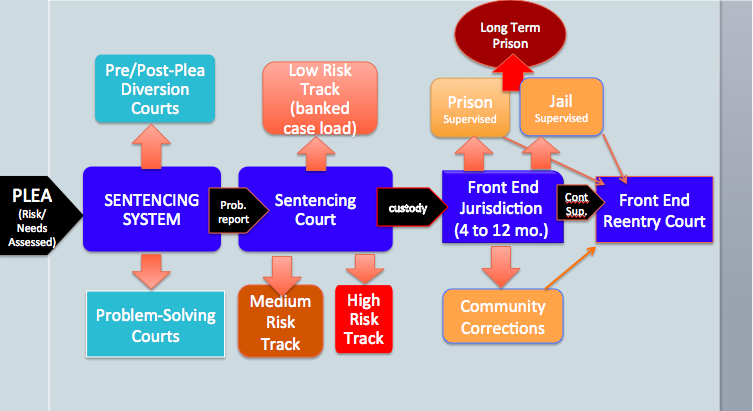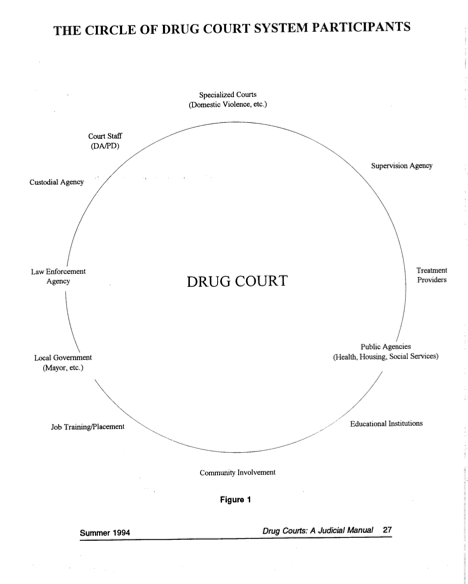The Components of the Sentencing Track: Part 6
The diagram above can be thought of as two separate segments. The first (from “Plea” arrow to “Custody” arrow) focuses in on the need to effectively categorize, sentence, and track offenders, with a minimum of staff and resources. Tracks are essential to the system as the court will sentence and monitor offenders with very different risks and needs. A sentencing team with a different skill set is required to deal with low risk and diversion participants than with high risk and violent offenders (as a different team skill set would be required for Drug Court as opposed to Domestic Violence Court).
We know from the scientific literature (“Understanding the Risk Principle”), that mixing low and high risk offenders is counter-productive at best. That same dynamic works in the court room. Where possible, it’s best to keep participants with different risk levels apart. It’s also more cost-effective. Why have full staff at every session when you can substantially reduce the number of staff by sorting offenders by risk and need. When you create a participant track with few housing, job, or family issues, experienced staff in those areas can best use their time elsewhere. The savings would be substantial if case managers are designated to be in court once a week for a single track, rather than required to attend daily sessions
The second part of the diagram (from “Front End Jurisdiction” to Front End Reentry Court”) focuses on the potential for an “Early Intervention”. We focus on the front end because almost all states give their courts a window to recall the felon from prison within a relatively short time period (typically 4 to 12 months). Where courts are willing to use their statutory authority, serious and/or high risk offenders can complete a rehabilitation program over a short jail or prison term and avoid a long prison sentence. The opposite is true for felons sentenced to long prison terms (or even medium terms of 1 to 3 years). In most states, there is relatively little opportunity for a court to exercise authority over the “Back End”, as the felon, typically returns to the community under state supervision (see: Front Loaded Court Based interventions) .
The next segment will look at how decisions are made in an evidence-based Sentencing System



